From Ashimori Station to Ashimori
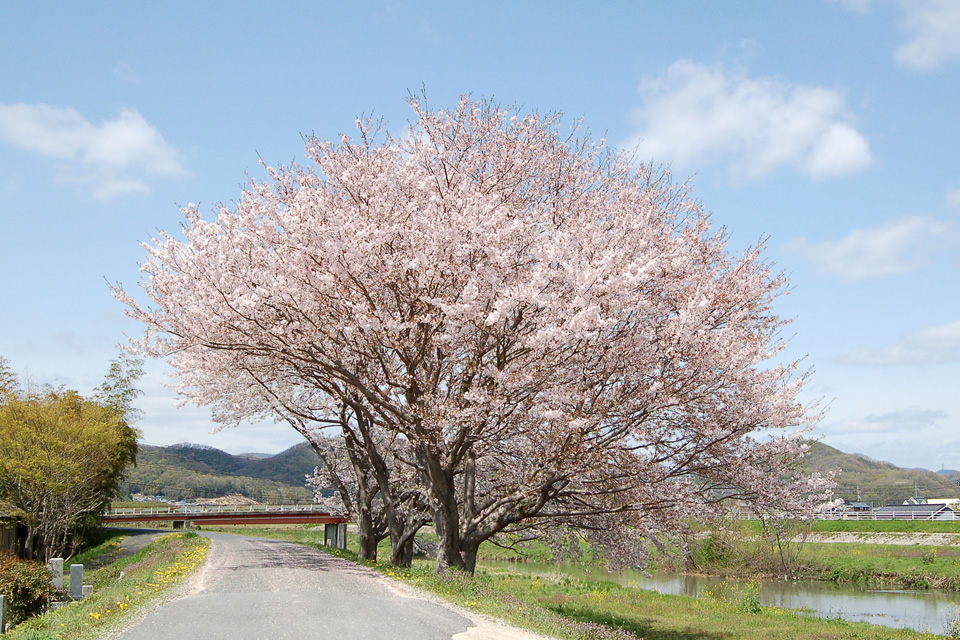
Get off at Ashimori Station and walk along the car road on the embankment of the Ashimori River. After walking for 1 kilometer, the road separates from the river, but the walking trail continues on the road atop the embankment.
On the embankment, dandelions and various weeds were blooming. There are cherry trees planted in some parts of the embankment, and they are about 80% in bloom.
I saw a grey heron, a little egret, and a kingfisher flying near the bend of the river. This stretch of the river is preserved in its natural state, and it likely supports a variety of fish as well. It is now protected as a rare habitat for fireflies.
Streetscape of Ashimori
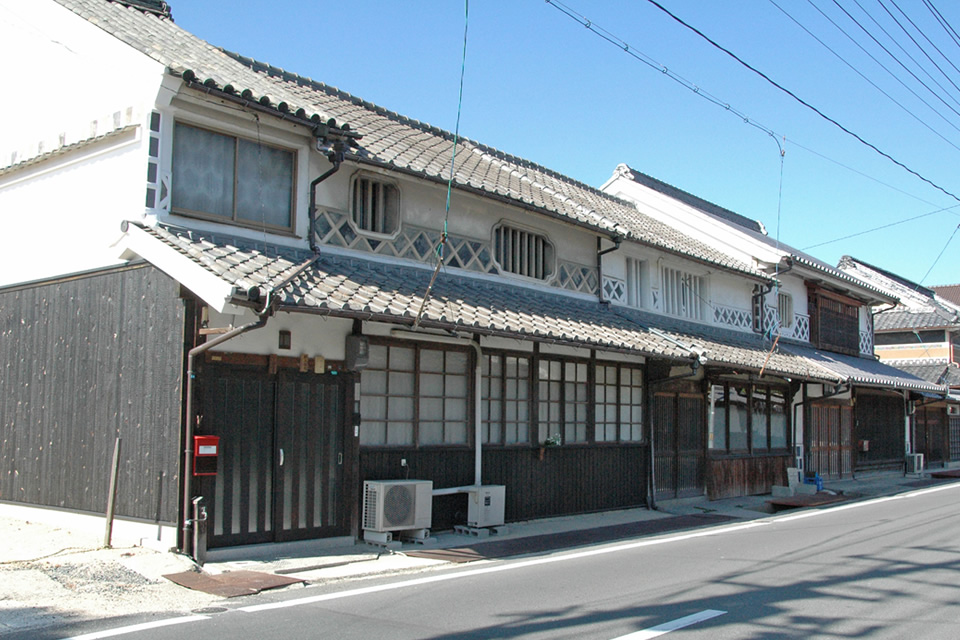
After returning to the road, walk a little further to enter the streetscape of Ashimori. Ashimori flourished as a castle town under the successive lords of the Kinoshita family, who were relatives of the brother of Hideyoshi Toyotomi's lawful wife, Lady North's ruling brother.
The town features preserved traditional buildings from the Edo period, with walls made of plastered namako (herringbone-patterned) tiles, lattice windows, and roofs covered in round tiles. The historic merchant houses and the overall townscape have been actively preserved. Public buildings also harmonize with the surrounding scenery to maintain the visual harmony.
Fujita Sennenji Residence
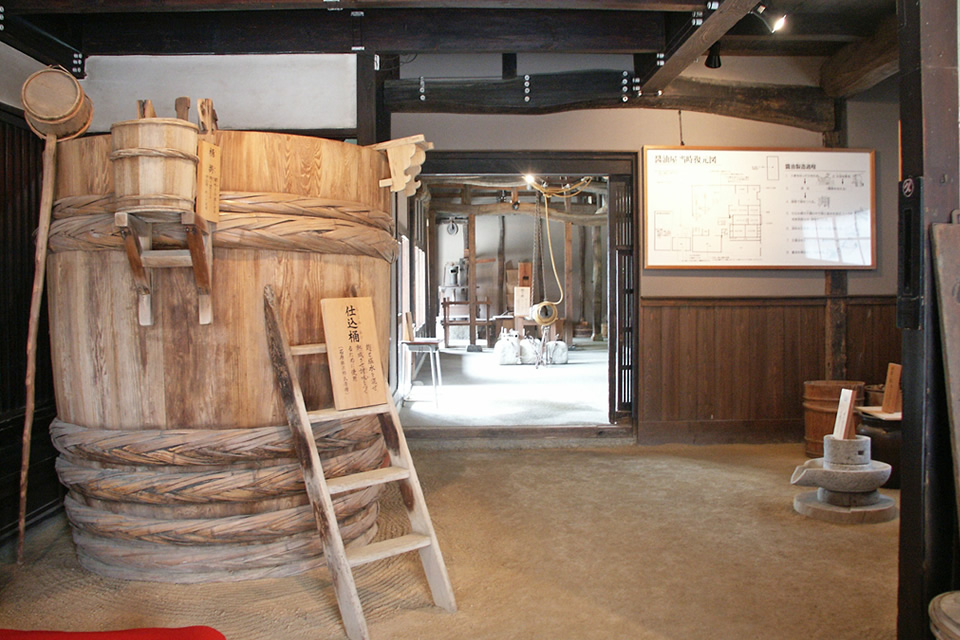
The "Fujita Sennenji Shop," which was engaged in soy sauce production, is currently preserved. Alongside the building from the late Edo period, the interior exhibits the soy sauce manufacturing equipment used at that time. The preservation of Ashimori's townscape is made possible through the cooperation of local residents living here.
Ashimori Samurai Residence
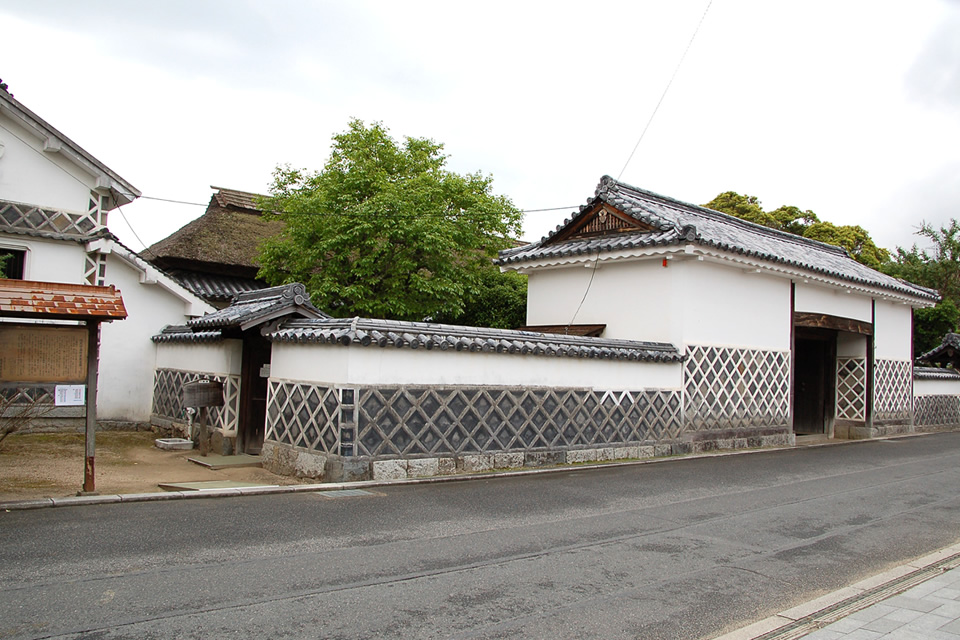
If you turn left just before the police station that doesn't look like a typical police station, you will find the preserved residence of the Ashimori Clan's former chief retainer.
The symbolic feature is the namako wall of the rowhouse gate. On the right side, there is Ashimori Elementary School, and the rough-cut stone pillars create an open atmosphere. In one corner of the schoolyard, you may notice a bronze statue of Ninomiya Kinjiro, which evokes a sense of nostalgia in some way.
Please refer to the page "Ashimori Clan Samurai Residence and the Kinoshita Family" for information about the Ashimori Clan samurai residence.
The birthplace of Kinoshita Rigen
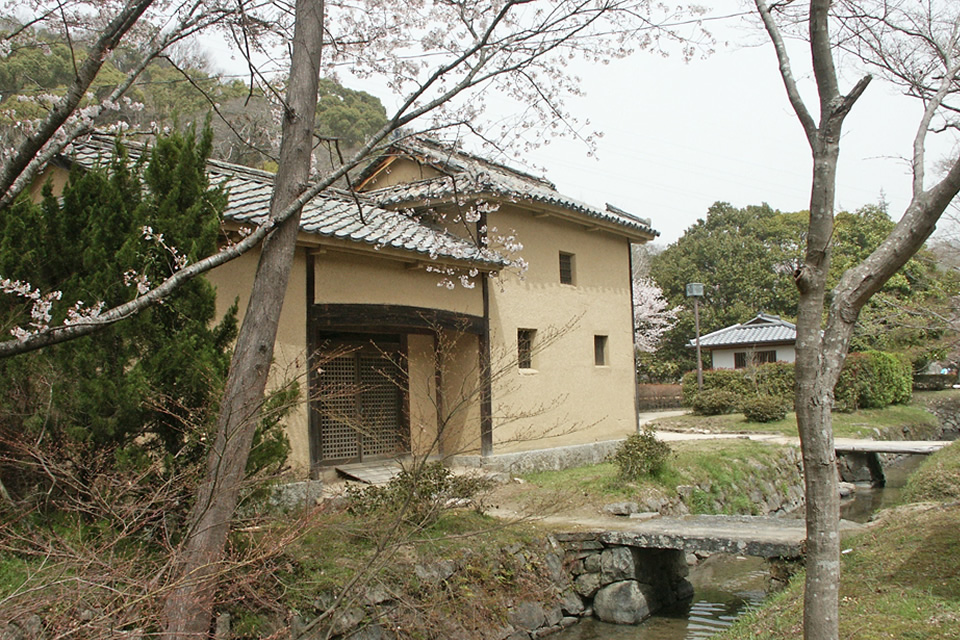
If you turn right at the corner of the elementary school playground, you will come to the birthplace of Kinoshita Rigen. He was a descendant of the Kinoshita clan, known as a prominent member of the Shirakaba-ha (White Birch School) of poets, and there is a poetry monument dedicated to him at Tsurushima in Omizu-en Garden.
The wide spread petals,
tired and fraying,
the large peony blossom,
falling from its calyx.
(poet:Rigen)
From this place, Ogata Kōan was also born. He studied Dutch learning in Edo (Tokyo), became a practitioner of Western medicine, established the Tekijuku school in Osaka, and played a significant role in promoting Western medicine and nurturing leaders during the late Edo and Meiji Restoration periods.
Omizu-en Garden
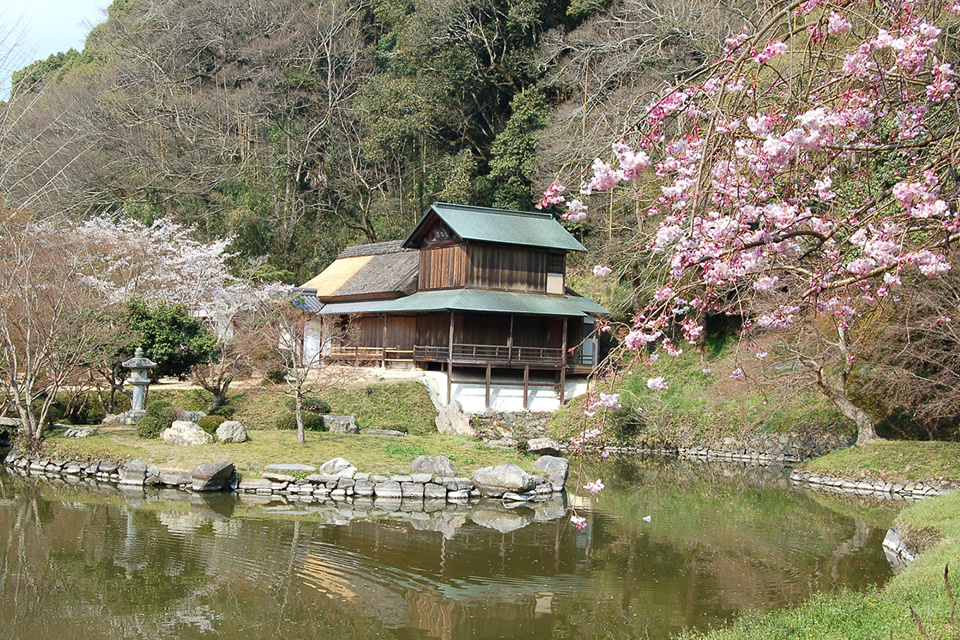
Once you pass by the birthplace of Kinoshita Rigen, you arrive at Omizu-en Garden. It is a pond and stream stroll garden belonging to the Kinoshita family, the feudal lords of Ashimori. The park is famous for its autumn foliage, and facing the pond stands the picturesque Ginfu Pavilion, constructed in the sukiya-zukuri style.
Heading east from Omizu-en Garden leads you to the embankment of Ashimori River. The cherry trees along the embankment were about 80% in bloom. Every year, a cherry blossom festival is held in the riverside park.
Ashimori Hachiman-gū Shrine Main Hall
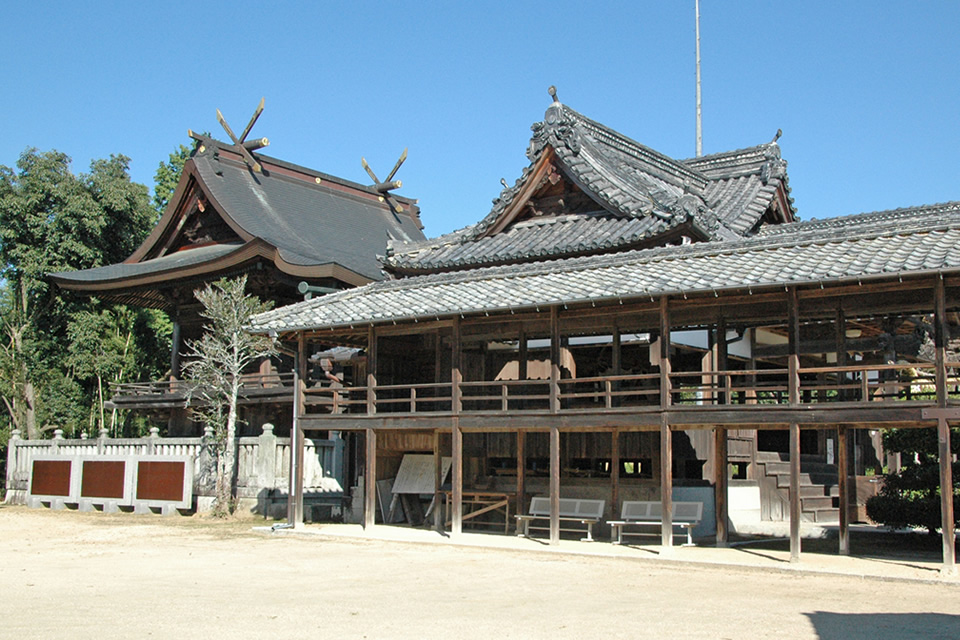
Walk down along the cherry blossom-lined embankment. Pass Aoi Bridge and continue walking on the bicycle path along the embankment until you reach Miyachi Bridge. Cross Miyachi Bridge and proceed straight towards Ashmori Hachiman-gū Shrine. On the opposite side of the kindergarten, there are stone steps leading to a stone drum bridge and a torii gate, taking you to Hachiman-gū Shrine. Once you reach the top of the stone steps, you will arrive at a square beside Ashmori Hachiman-gū Shrine.
The history of Ashmori Hachiman-gū Shrine is ancient, and it is said to have existed during the reign of Emperor Ōjin (around the 3rd century).
Ashimori Hachiman-gū Shrine Torii Gate
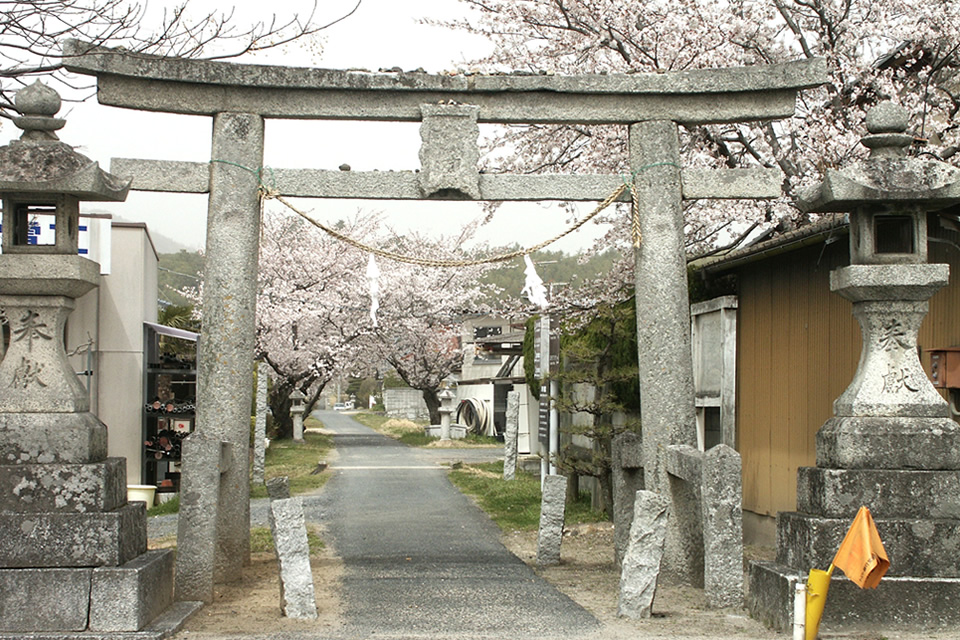
After worshiping, descend the stone steps and slope straight ahead from the main hall. Along the way, there is a large oak tree. After walking for about 400 meters, you will reach the main gate Torii.
Although it may seem like an ordinary stone Torii gate, it is said to be the oldest Torii gate in Japan with an inscription.
Turn right at the road in front of the Torii gate, and continue straight ahead to reach the bicycle path along the Ashimori River. Walk along the opposite side of the embankment from where you came, following the flow of the river. Pass by Ōishi-jinja Shrine, go under the Kibi Line, and cross Ashimori River to reach Ashimori Station.
